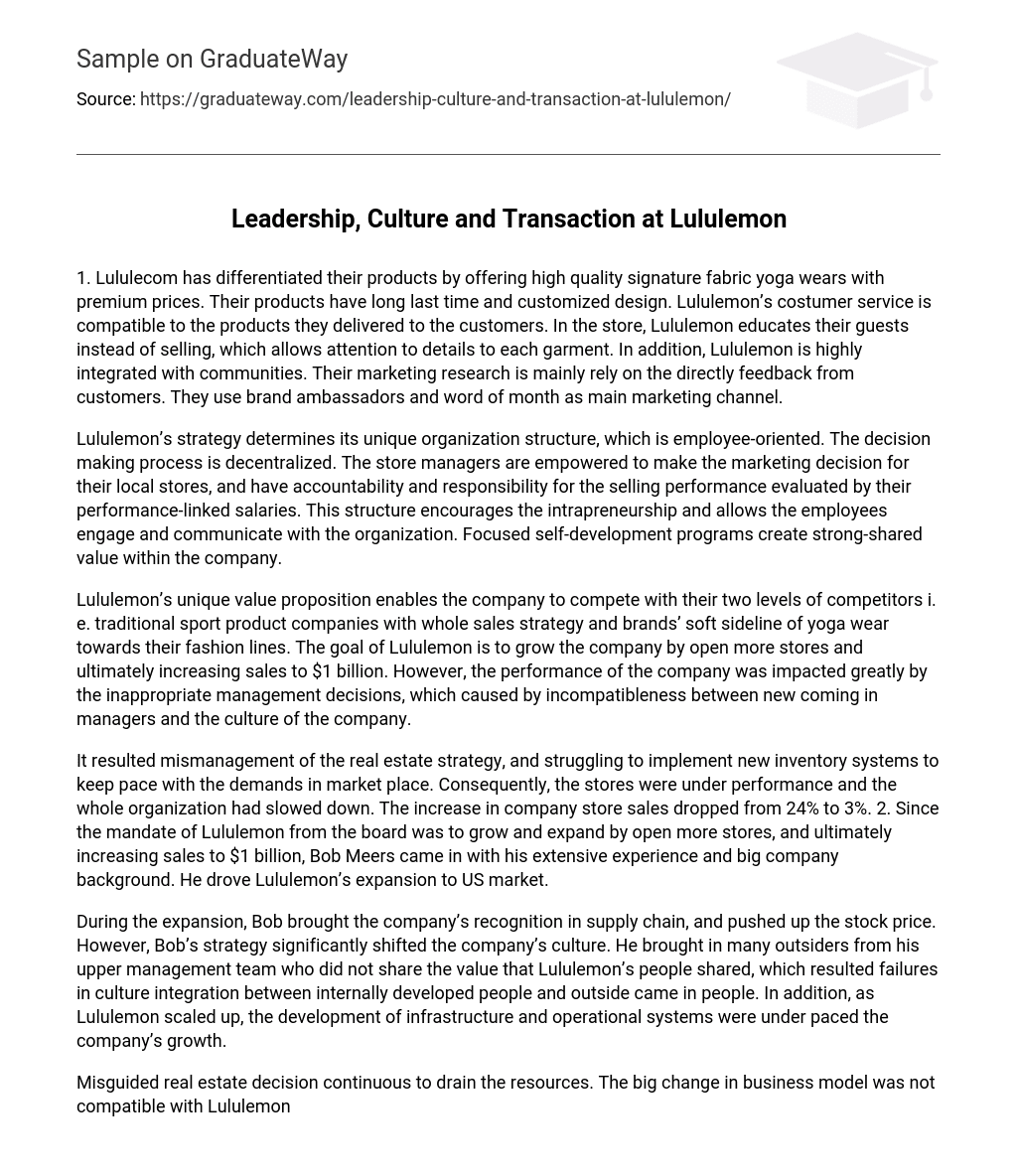1. Lululecom has differentiated their products by offering high quality signature fabric yoga wears with premium prices. Their products have long last time and customized design. Lululemon’s costumer service is compatible to the products they delivered to the customers. In the store, Lululemon educates their guests instead of selling, which allows attention to details to each garment. In addition, Lululemon is highly integrated with communities. Their marketing research is mainly rely on the directly feedback from customers. They use brand ambassadors and word of month as main marketing channel.
Lululemon’s strategy determines its unique organization structure, which is employee-oriented. The decision making process is decentralized. The store managers are empowered to make the marketing decision for their local stores, and have accountability and responsibility for the selling performance evaluated by their performance-linked salaries. This structure encourages the intrapreneurship and allows the employees engage and communicate with the organization. Focused self-development programs create strong-shared value within the company.
Lululemon’s unique value proposition enables the company to compete with their two levels of competitors i. e. traditional sport product companies with whole sales strategy and brands’ soft sideline of yoga wear towards their fashion lines. The goal of Lululemon is to grow the company by open more stores and ultimately increasing sales to $1 billion. However, the performance of the company was impacted greatly by the inappropriate management decisions, which caused by incompatibleness between new coming in managers and the culture of the company.
It resulted mismanagement of the real estate strategy, and struggling to implement new inventory systems to keep pace with the demands in market place. Consequently, the stores were under performance and the whole organization had slowed down. The increase in company store sales dropped from 24% to 3%. 2. Since the mandate of Lululemon from the board was to grow and expand by open more stores, and ultimately increasing sales to $1 billion, Bob Meers came in with his extensive experience and big company background. He drove Lululemon’s expansion to US market.
During the expansion, Bob brought the company’s recognition in supply chain, and pushed up the stock price. However, Bob’s strategy significantly shifted the company’s culture. He brought in many outsiders from his upper management team who did not share the value that Lululemon’s people shared, which resulted failures in culture integration between internally developed people and outside came in people. In addition, as Lululemon scaled up, the development of infrastructure and operational systems were under paced the company’s growth.
Misguided real estate decision continuous to drain the resources. The big change in business model was not compatible with Lululemon’s culture and value. As Day said: ‘the company was on shaky ground. ’ 3. When Day came in, she needs to react fast and bring back the culture of Lululemon. In order to solve the problem of the management team, she needs to bring in new people. As part of company culture, the leadership team needs to be empowered, in controlled and contributed to the decision making process.
Moreover, the misguided store location needs to be rearranged following their brand strategy, which expends according to the geographic and demographic market segmentation. In addition, the infrastructure and operational system need to be improved in order to cope with the expansion speed. It is expected that, as a role model, Day would lead Lululemon to grow following a sustainable strategy, which fit into their culture, and ultimately reach their company goal.





